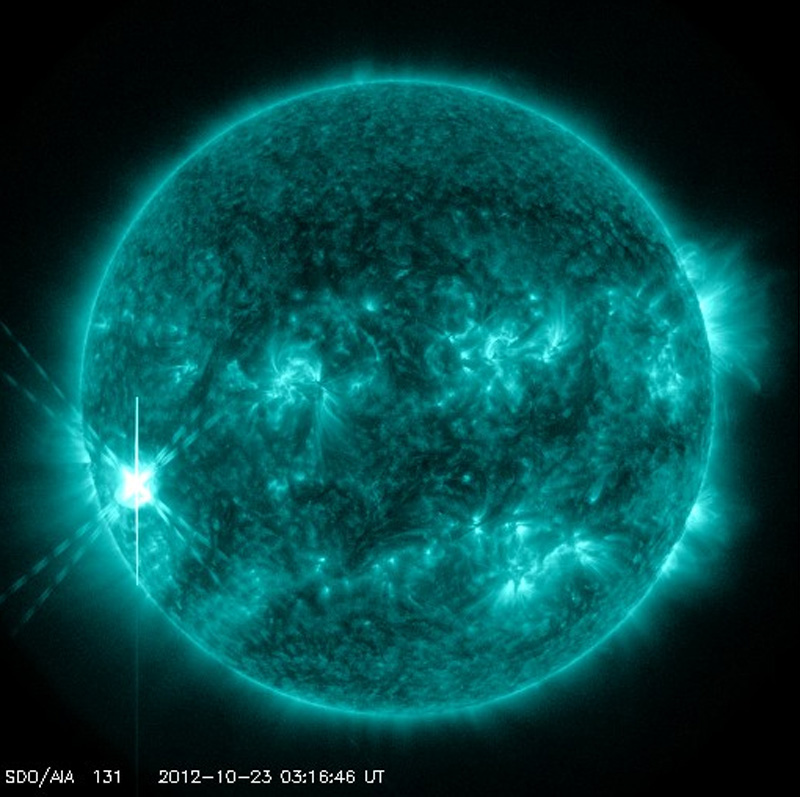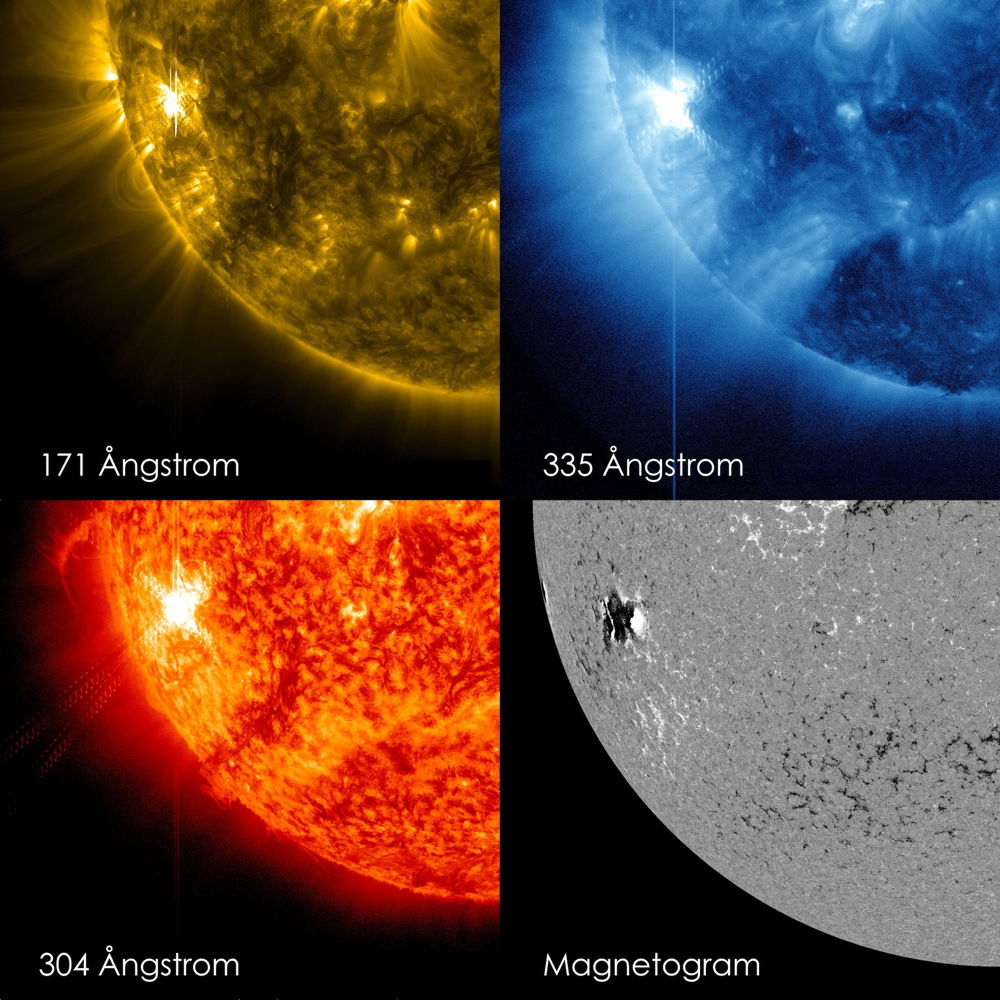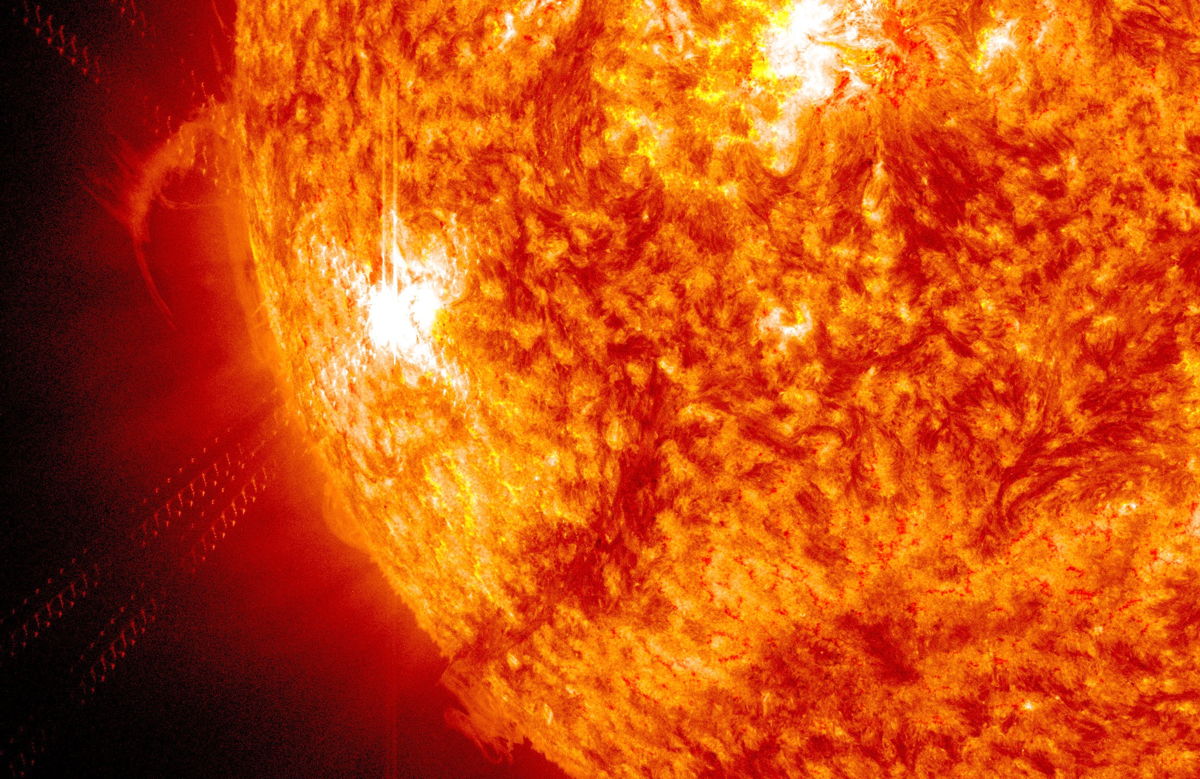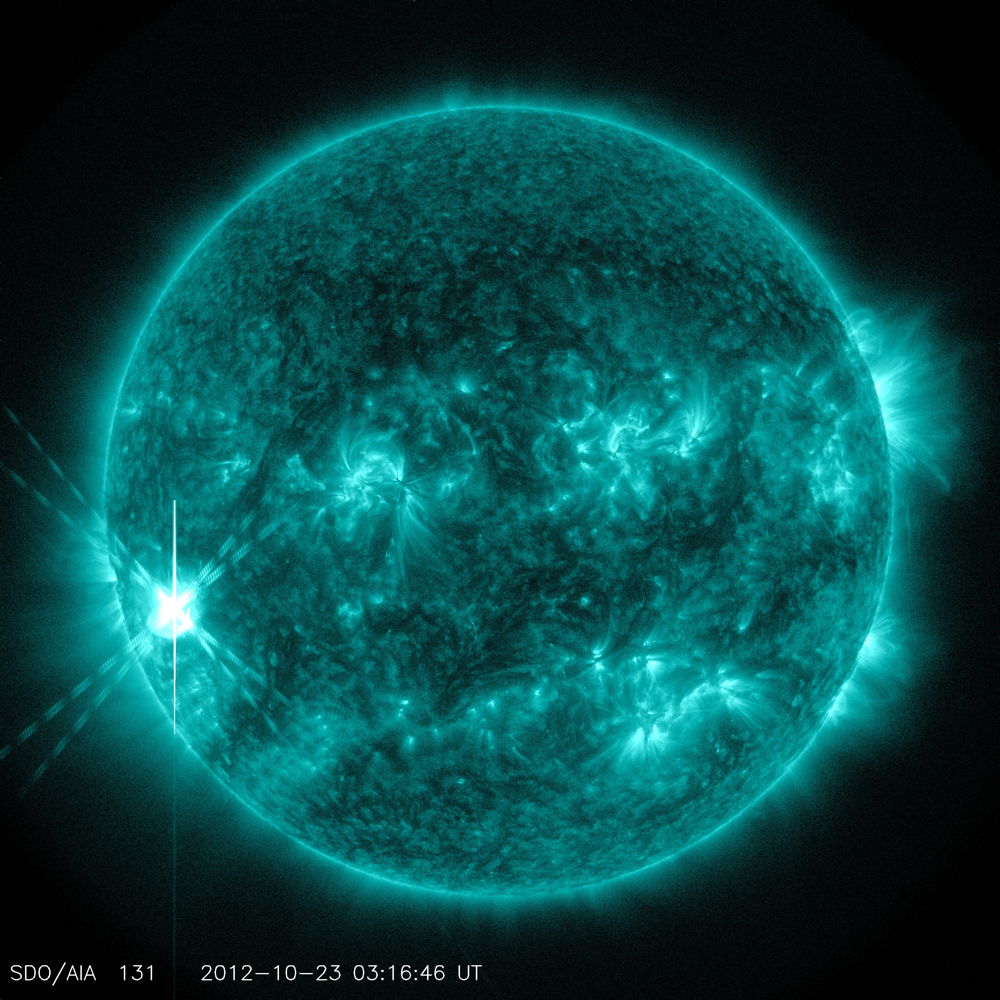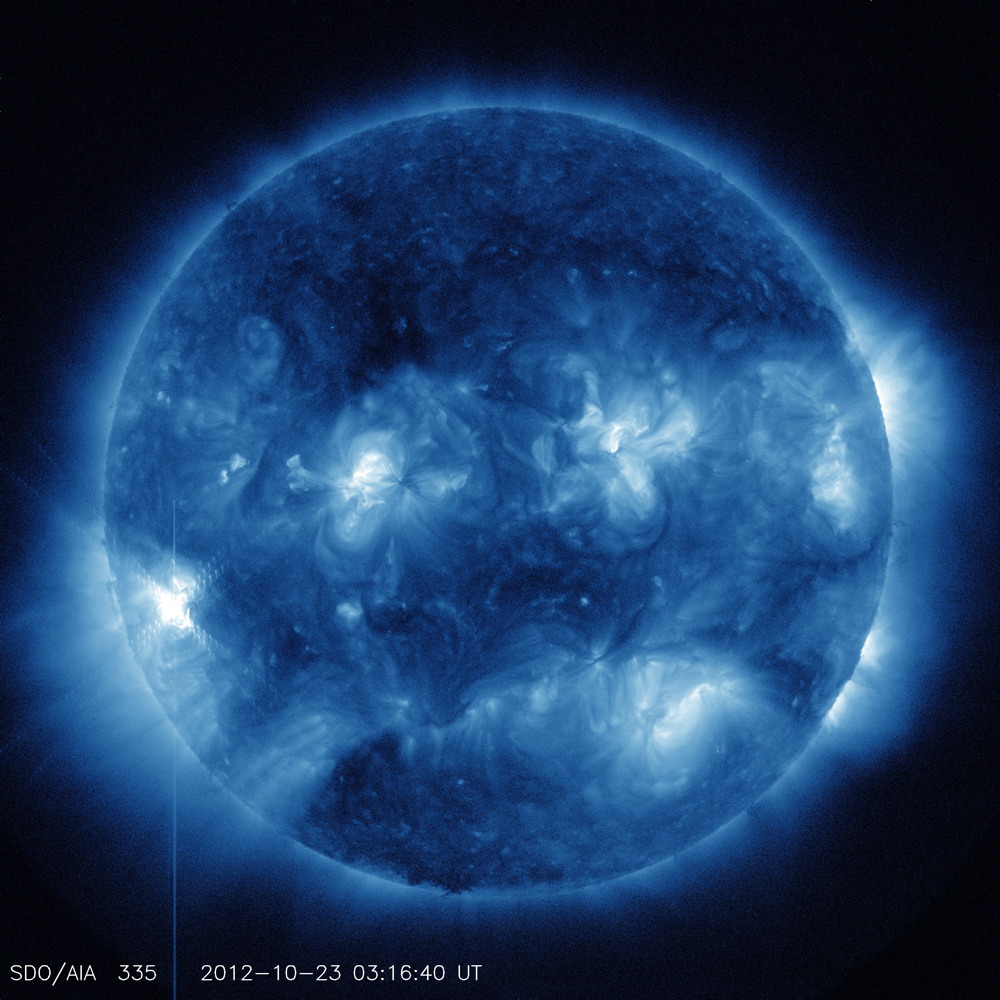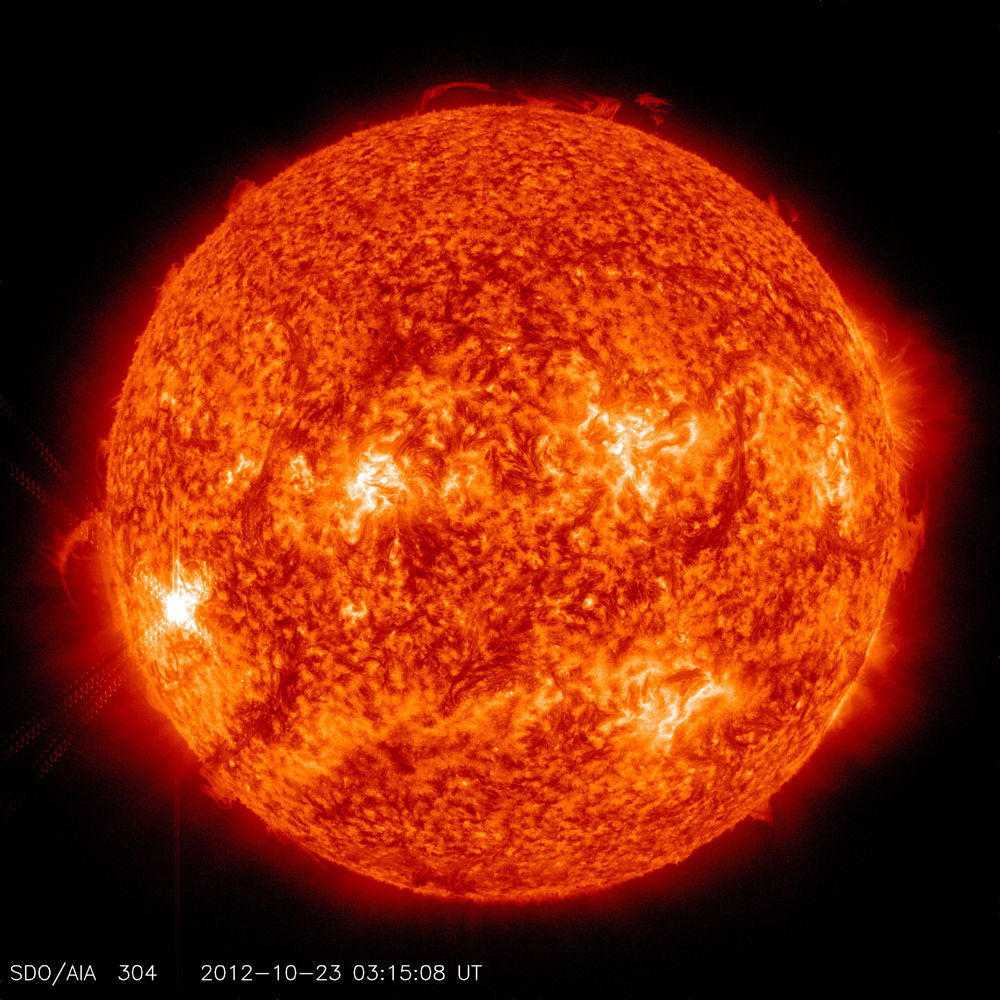Amazing Solar Flare of Oct. 22, 2012 (Photos)
Oct. 22 Solar Flare
NASA's Solar Dynamics Observatory satellite captured this photo of the X-class solar flare unleashed from the sun Oct. 22, 2012.
Four Views of Solar Flare Oct. 22, 2012
By observing the sun in a number of different wavelengths, NASA's telescopes can tease out different aspects of events on the sun. These four images of a solar flare on Oct. 22, 2012, show from the top left, and moving clockwise: light from the sun in the 171 Angstrom wavelength, which shows the structure of loops of solar material in the sun's atmosphere, the corona; light in 335 Angstroms, which highlights light from active regions in the corona; a magnetogram, which shows magnetically active regions on the sun; light in the 304 wavelength, which shows light from the region of the sun's atmosphere where flares originate.
Magnetogram of Solar Flare Oct. 22, 2012
The October 22 X1.8 flare in a blended 304-Magnetogram image.
Blended 304-Magnetogram Solar Flare Oct. 22, 2012
The October 22 X1.8 flare in a blended 304-Magnetogram image. Cropped.
131 Angstrom Wavelength Image of Solar Flare Oct. 22, 2012
A solar flare on Oct. 22, 2012 as captured by NASA's Solar Dynamics Observatory (SDO) in the 131 Angstrom wavelength. This wavelength of light is used for observing solar material heated to 10 million degrees Kelvin, as in a solar flare. The wavelength is typically colorized in teal, as it is here.
335 Angstrom Wavelength Image of Solar Flare Oct. 22, 2012
The October 22 flare in 335 Ångstrom light.
304 Angstrom Wavelength Image of Solar Flare Oct. 22, 2012
The October 22 flare in 304 Ångstrom light.
Breaking space news, the latest updates on rocket launches, skywatching events and more!

Space.com is the premier source of space exploration, innovation and astronomy news, chronicling (and celebrating) humanity's ongoing expansion across the final frontier. Originally founded in 1999, Space.com is, and always has been, the passion of writers and editors who are space fans and also trained journalists. Our current news team consists of Editor-in-Chief Tariq Malik; Editor Hanneke Weitering, Senior Space Writer Mike Wall; Senior Writer Meghan Bartels; Senior Writer Chelsea Gohd, Senior Writer Tereza Pultarova and Staff Writer Alexander Cox, focusing on e-commerce. Senior Producer Steve Spaleta oversees our space videos, with Diana Whitcroft as our Social Media Editor.
